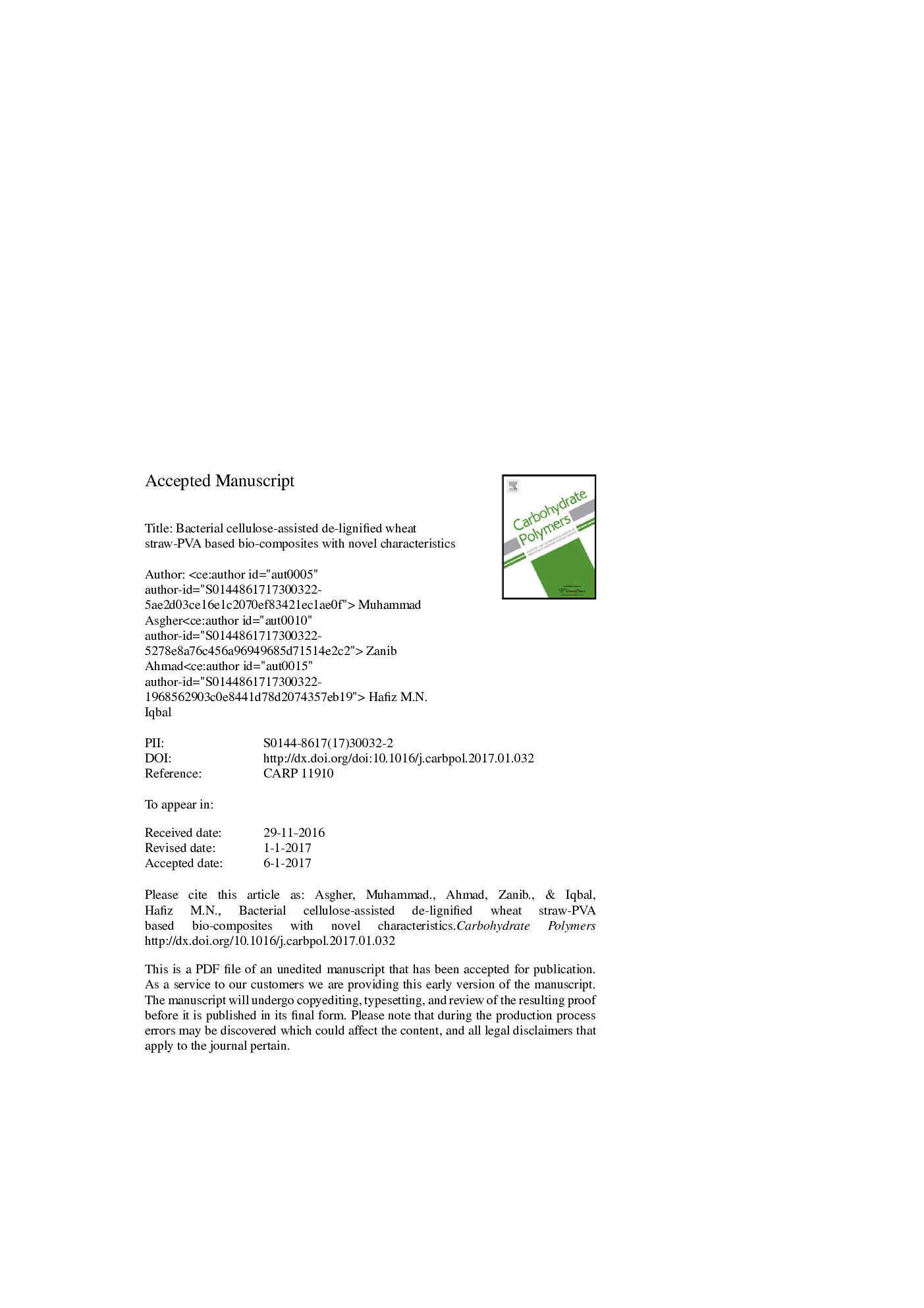| Article ID | Journal | Published Year | Pages | File Type |
|---|---|---|---|---|
| 5157748 | Carbohydrate Polymers | 2017 | 29 Pages |
Abstract
In the present study, in-house extracted ligninolytic consortium was used as a green catalyst to modify the pristine wheat straw through de-lignification. The ligninolytic consortium showed an enhanced level of de-lignification with a maximal cellulose exposure from 24% to 76.54% cellulose. The de-lignified wheat straw was further strengthened using bacterial cellulose integration. Subsequently, a well-known compression molding technique was used to develop bio-composites from a de-lignified and bacterially modified wheat straw in the presence of polyvinyl alcohol (PVA) and glycerol as a plasticizer. The newly developed bio-composites were characterized using a variety of analytical and imaging techniques including Fourier Transform Infra-Red Spectroscopy (FT-IR) and Scanning Electron Microscopy (SEM). Evidently, the characterization profile revealed a considerable improvement in the morphology, mechanical and water uptake features of the newly developed bio-composites. In summary, the improved characteristics of bacterial cellulose-assisted de-lignified wheat straw-PVA based bio-composites suggest a high potential of enzymatic treatment for biotechnological exploitability.
Related Topics
Physical Sciences and Engineering
Chemistry
Organic Chemistry
Authors
Muhammad Asgher, Zanib Ahmad, Hafiz M.N. Iqbal,
